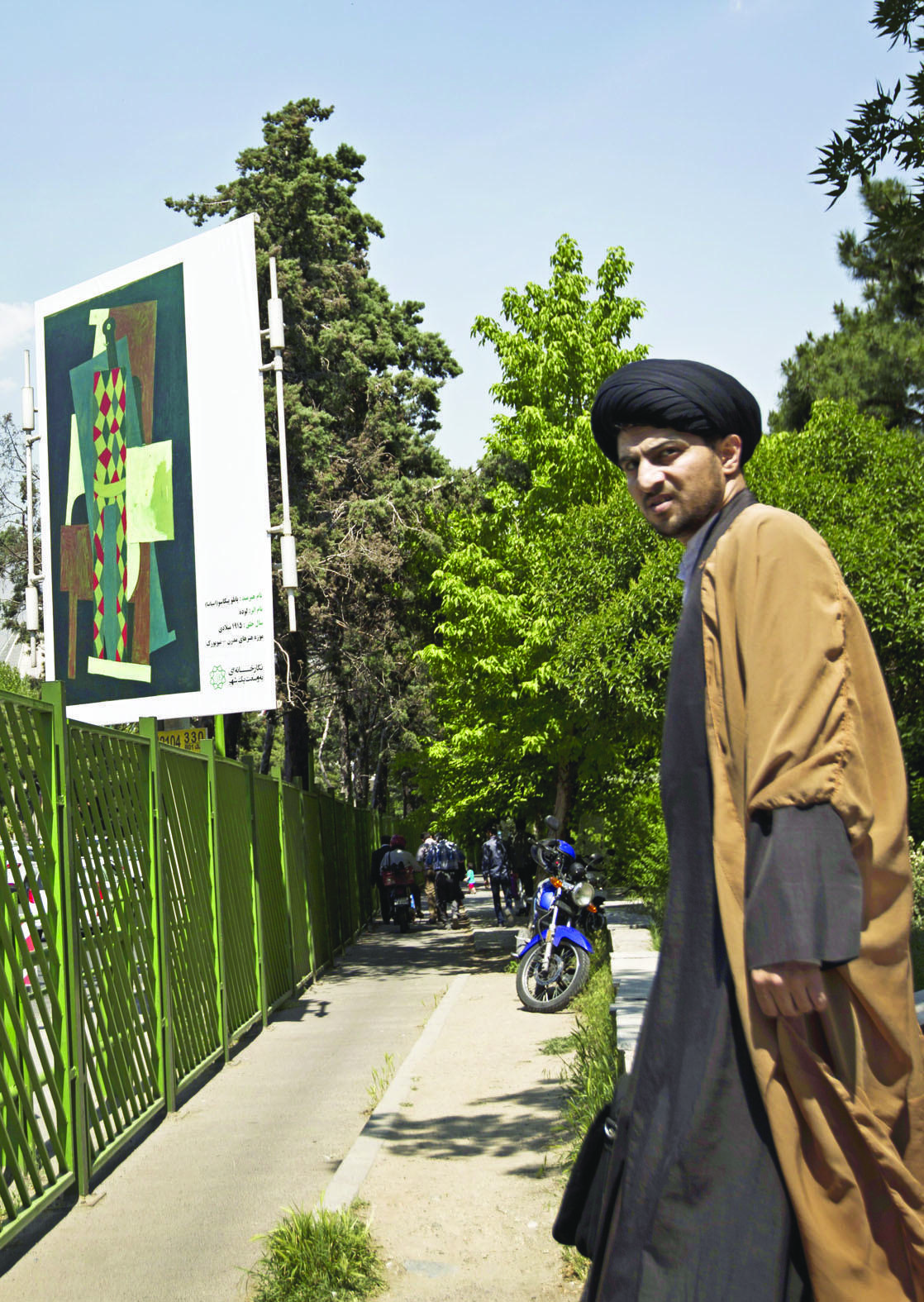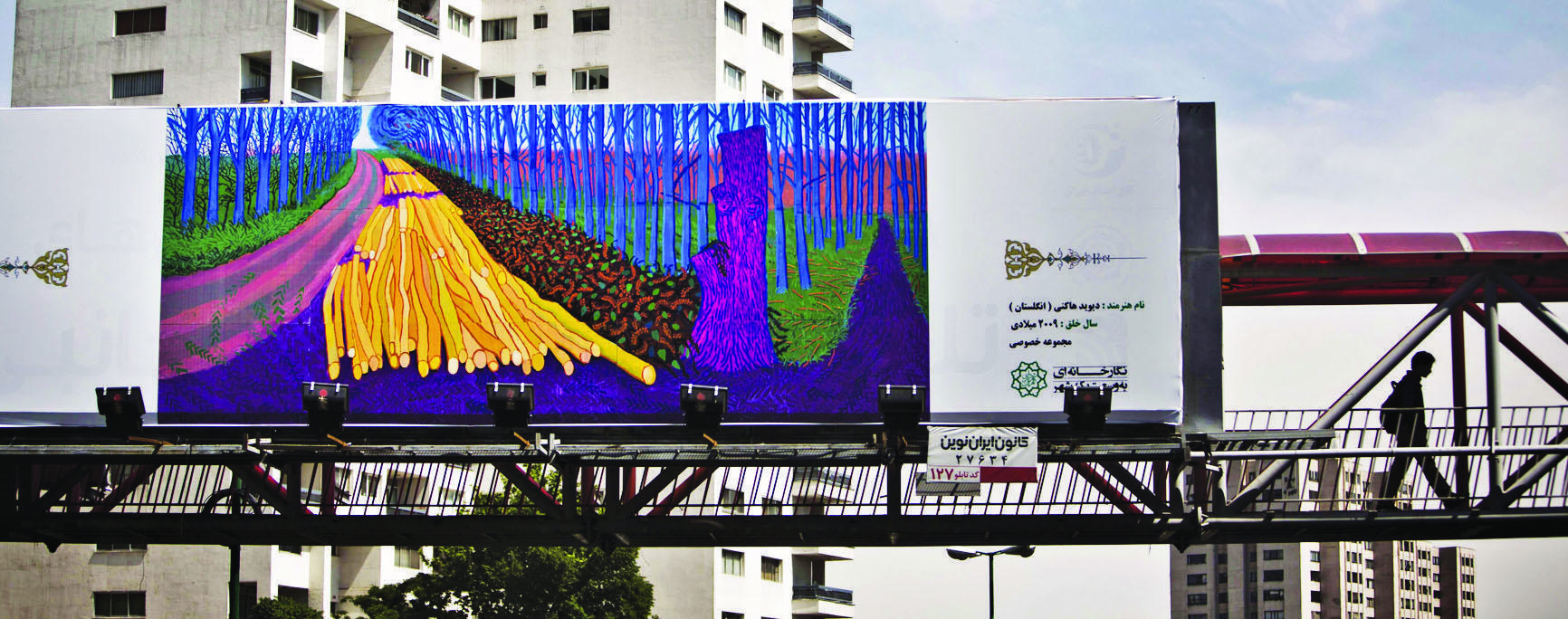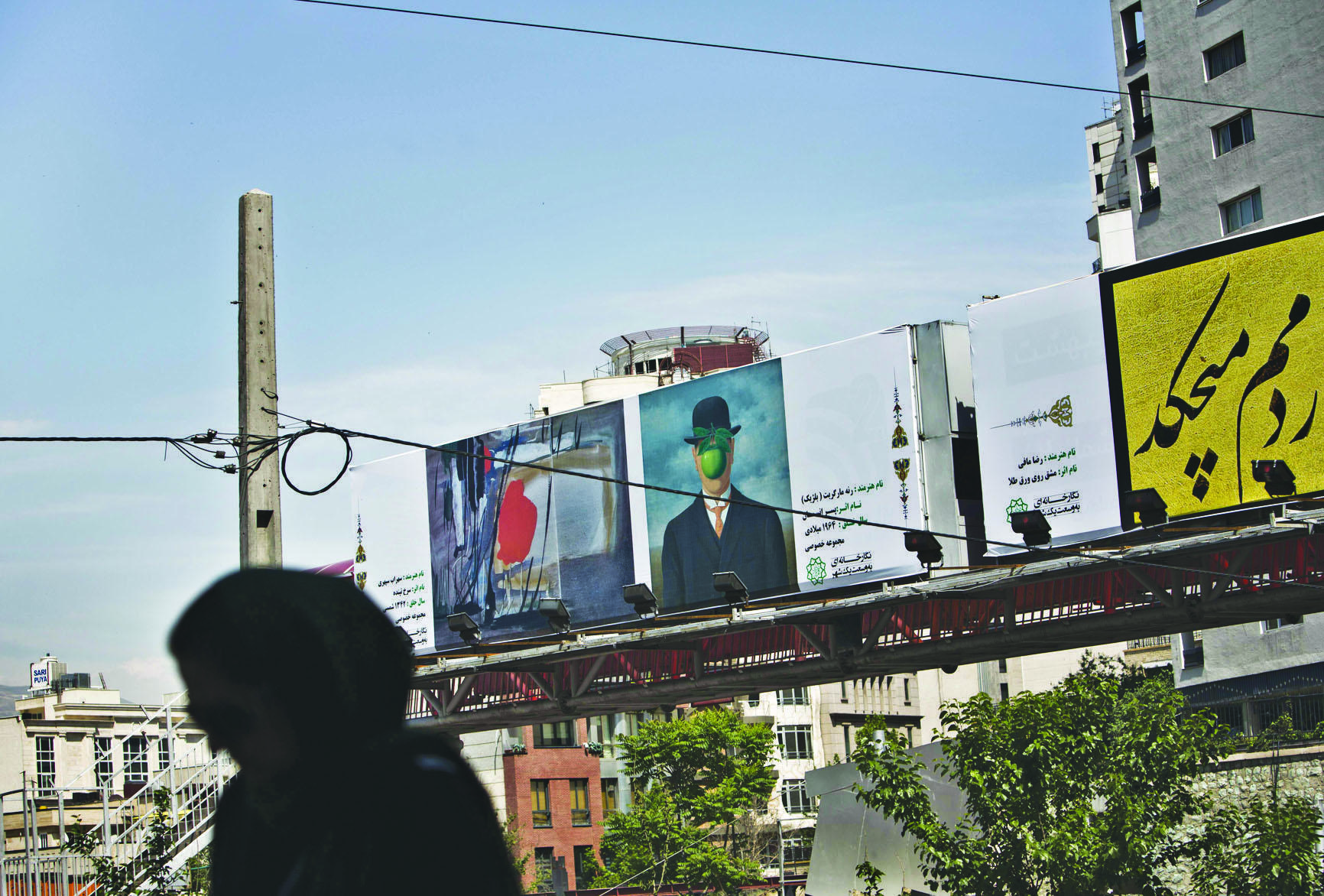With Matisse and Van Gogh, Tehran gets a makeover
TEHRAN – Agence France-Presse

The "Blue Window" painting by French artist Henri Matisse (1869-1954) on Tehran's Chamran highway. AFP Photo / Behrouz Mehri
Millions of commuters used to spending hours in Tehran traffic jams have at least had something nicer to look at during journeys this week: famous works of art.
Advertising boards that normally feature the latest smartphones, home appliances or insurance plans have made way until May 16 for masterpieces by famous artists in a giant urban beautification scheme.

Vincent Van Gogh’s “Sunflowers,” Edvard Munch’s “The Scream” and “The Blue Window” by Henry Matisse are among the reproductions lining streets and highways, aiming to get citizens more interested in art and encourage gallery visits.
The project, called “A Gallery as Big as a Town,” has taken the city by surprise. Some 1,600 billboards featuring 200 Western and Asian works and 500 Iranian ones now sit near murals of supreme leader Ayatollah Ali Khamenei, his predecessor, the Islamic republic’s founder, Ruhollah Khomeini, and countless martyrs of the Iran-Iraq war.
The art, all of which would have required approval by the culture ministry - nudes are banned in Iran and other works risk being deemed un-Islamic - may be considered a distraction as well as a welcome sight in a city where fatal road accidents and bad driving are common.
For example, “The Son of Man,” the work by Belgian surrealist artist Rene Magritte which features an apple in the face of a man in a tie and bowler hat, stares out at drivers from an overpass.
But the sprawling scheme represents an evolution, albeit temporary, in the city’s appearance. After the Islamic revolution in 1979, advertising was banned on the grounds that it encouraged materialism and consumerism.
Street and television advertisements, however, started popping up in the 1990s and then proliferated, now accompanied by the occasional public health promotion.
The art also offers a softer side to an architecturally bland cityscape, where concrete housing blocks and revolutionary slogans such as “Death to America” and “We will always resist” are common.
The art has been a long time coming, Hamid Rezaie, a public relations officer for the Organization for Tehran’s Beautification, said, noting that an Iranian sculptor, Said Shalapour, came up with the idea a decade ago.
The exhibition is being funded by advertisers under a clause in their contracts with the municipality that sets aside 10-15 percent of the fees paid for the billboards for cultural promotions or events.
It also makes a refreshing change for at least some of the thousands who earn their living driving across the congested capital, one of the world’s biggest and most polluted cities with a population of more than 12 million.
But the scheme has also bred speculation among Iranians that it has political aims.
Tehran’s conservative mayor, Mohammad Bagher Ghalibaf, is a former Revolutionary Guards Air Force commander who lost out as a presidential candidate in 2005 and 2013.
Critics say Ghalibaf could use a public relations boost, given that the public judged him less palatable than Hassan Rouhani in June 2013.
But the municipality has denied any political motive, insisting the art is just the latest scheme from the mayor - following the opening of vast parks and sports complexes - to improve the lives of Tehranis.

 Vincent Van Gogh’s “Sunflowers,” Edvard Munch’s “The Scream” and “The Blue Window” by Henry Matisse are among the reproductions lining streets and highways, aiming to get citizens more interested in art and encourage gallery visits.
Vincent Van Gogh’s “Sunflowers,” Edvard Munch’s “The Scream” and “The Blue Window” by Henry Matisse are among the reproductions lining streets and highways, aiming to get citizens more interested in art and encourage gallery visits.
